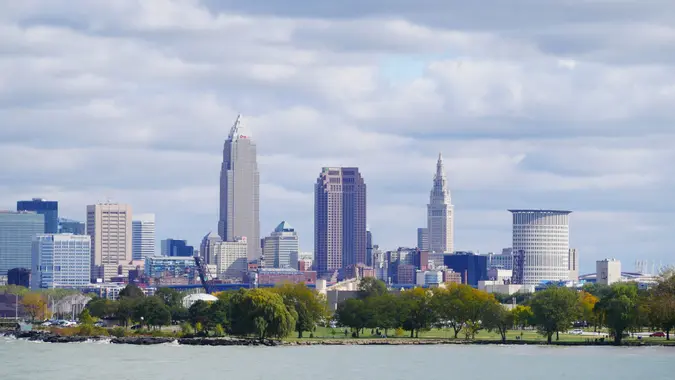What Will Mortgage Rates Look Like as We Come Out of a Government Shutdown?

Commitment to Our Readers
GOBankingRates' editorial team is committed to bringing you unbiased reviews and information. We use data-driven methodologies to evaluate financial products and services - our reviews and ratings are not influenced by advertisers. You can read more about our editorial guidelines and our products and services review methodology.

20 Years
Helping You Live Richer

Reviewed
by Experts

Trusted by
Millions of Readers
The government shutdown has proven a nightmare for many homebuyers and sellers. While Federal Housing Administration (FHA) loans and Veterans Affairs (VA) loans can still technically close, they largely haven’t been. “We haven’t been able to close FHA and VA loans, or get flood insurance through FEMA, which is required for properties in designated flood zones,” said Kevin Watson of Churchill Mortgage.
And while the government shutdown has officially ended, not everything is back to normal. Per NPR, federal workers are still waiting on payment, air travel disruptions could continue and some impacts could still be felt for a while.
As we emerge from this shutdown, many would-be homebuyers may find themselves wondering how mortgage rates will look in coming weeks. So what do the experts say?
Also see five states that could benefit from lower mortgage rates.
What Could Push Rates Up
Several factors could push mortgage rates upward as the government shutdown ends.
If investors feel reassured about the economy and stock market by the government reopening, they could sell Treasury bonds and move money into stocks. “Mortgage rates could see some short-term movement because of how closely tied they are to the 10-year Treasury, which many investors view as a safe haven during periods of uncertainty,” said Jeffrey M. Ruben, president of WSFS Home Lending.
Treasury yields — and therefore mortgage rates — could also rise if investors feel the spending bill that reopens the government goes too far, driving up deficit spending and government debt even higher than its current record levels. That adds risk for Treasury investors, who worry the government will inflate away its bloated debts.
Speaking of inflation, fresh data from the Bureau of Labor Statistics upon the government reopening could also move mortgage rates. Higher inflation readings could ultimately push up Treasury yields and mortgage rates. However, the White House has noted that October data may not be released, as “the agency was not able to collect price data and employment information that go into its most closely watched releases,” Politico reported.
What Could Drive Rates Down
On the flipside, if we were to see cooling inflation data in the future, it could help reassure bond investors and the Federal Reserve, and contribute to lower interest rates.
Mortgage lenders also have a say in all this. They add a “risk premium” spread above Treasury yields, based on their perceived risk of default. “Less economic risk reduces this risk premium spread, resulting in lower mortgage rates,” explained Steve Gattuso, professor of economics at Canisius University.
Will mortgage rates rise or fall as the government continues to reopen? It will depend on how investors and lenders react as they learn more.
Editor’s note on political coverage: GOBankingRates is nonpartisan and strives to cover all aspects of the economy objectively and present balanced reports on politically focused finance stories. You can find more coverage of this topic on GOBankingRates.com.
 Written by
Written by  Edited by
Edited by 

























